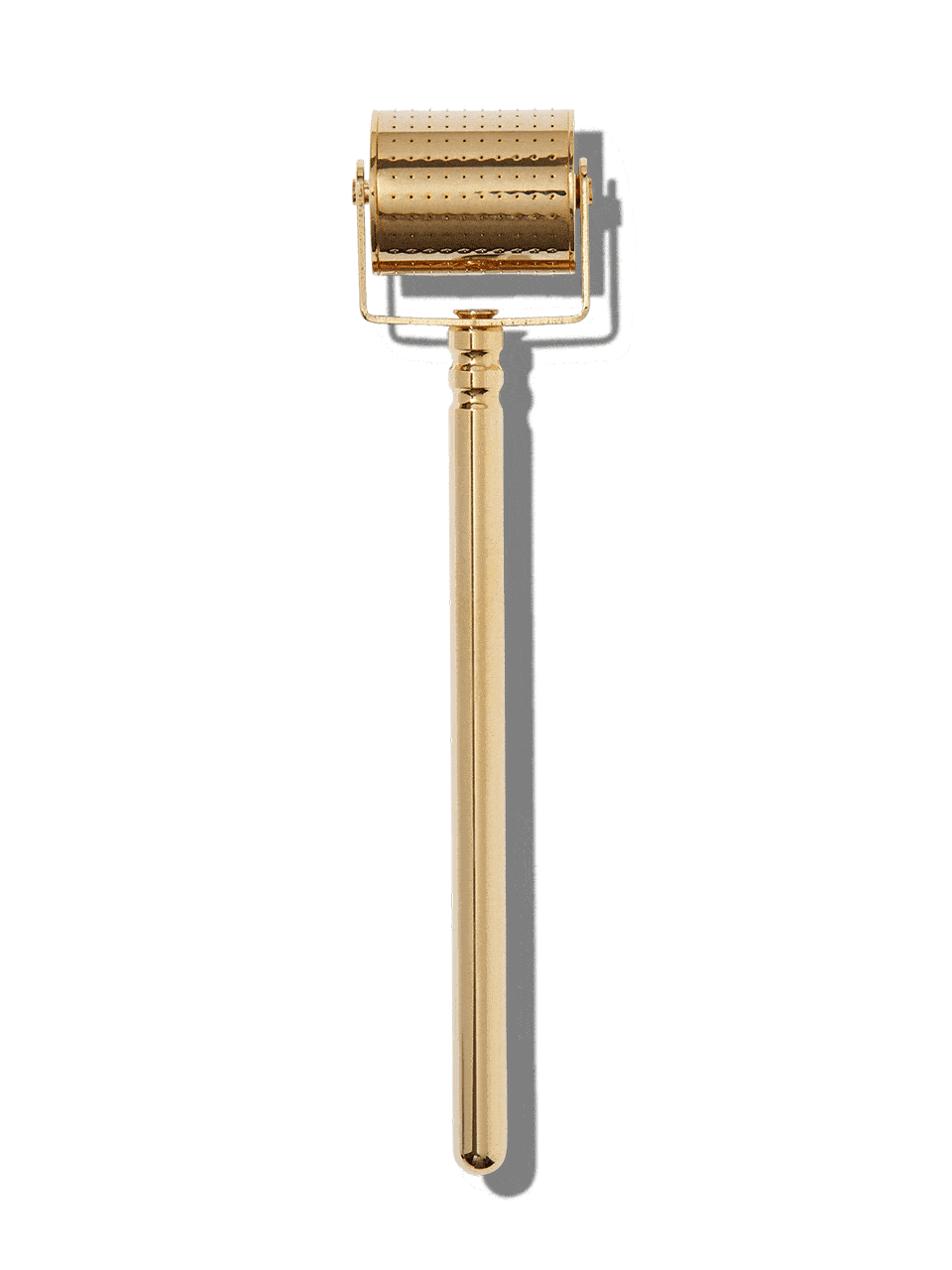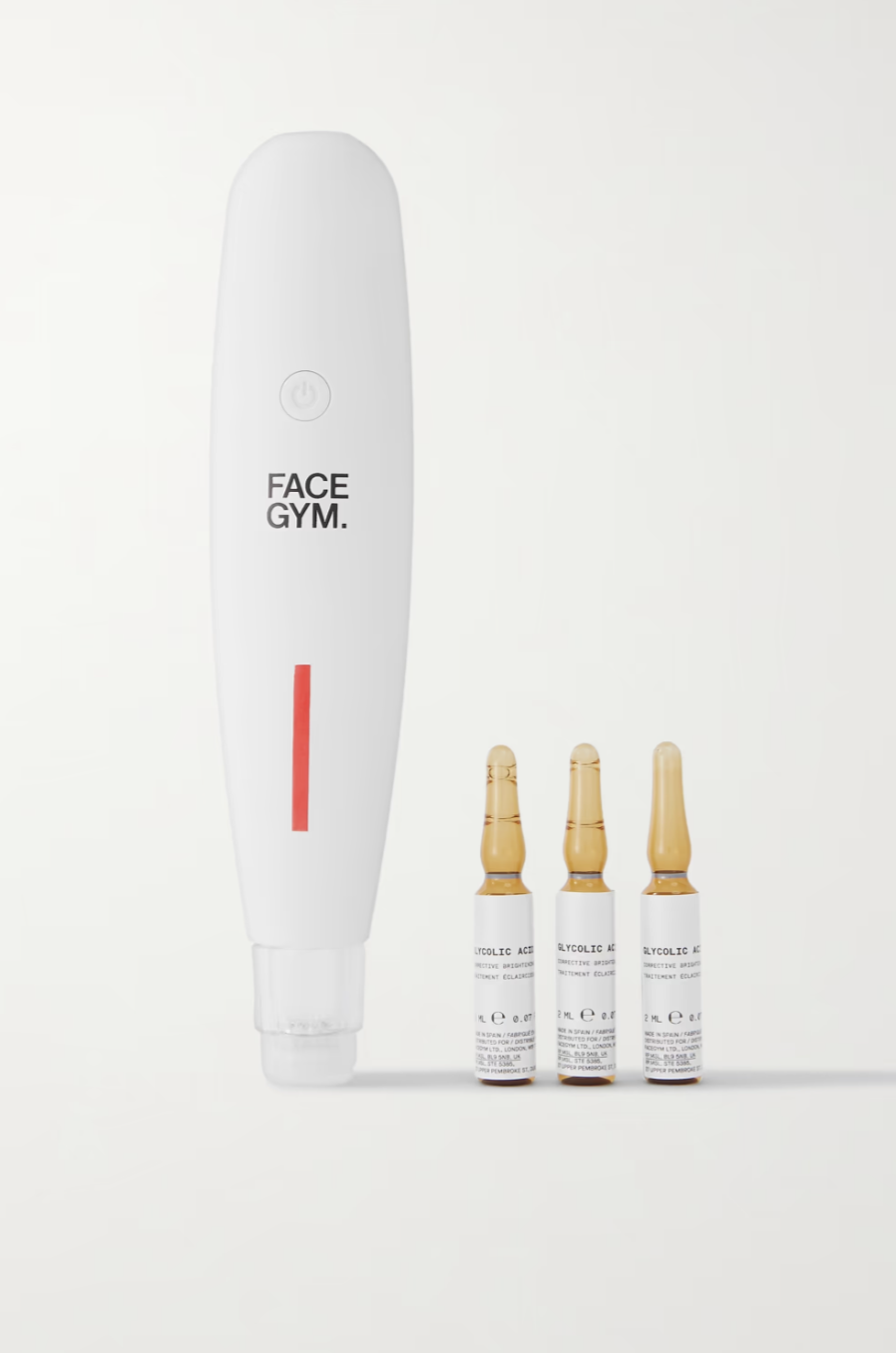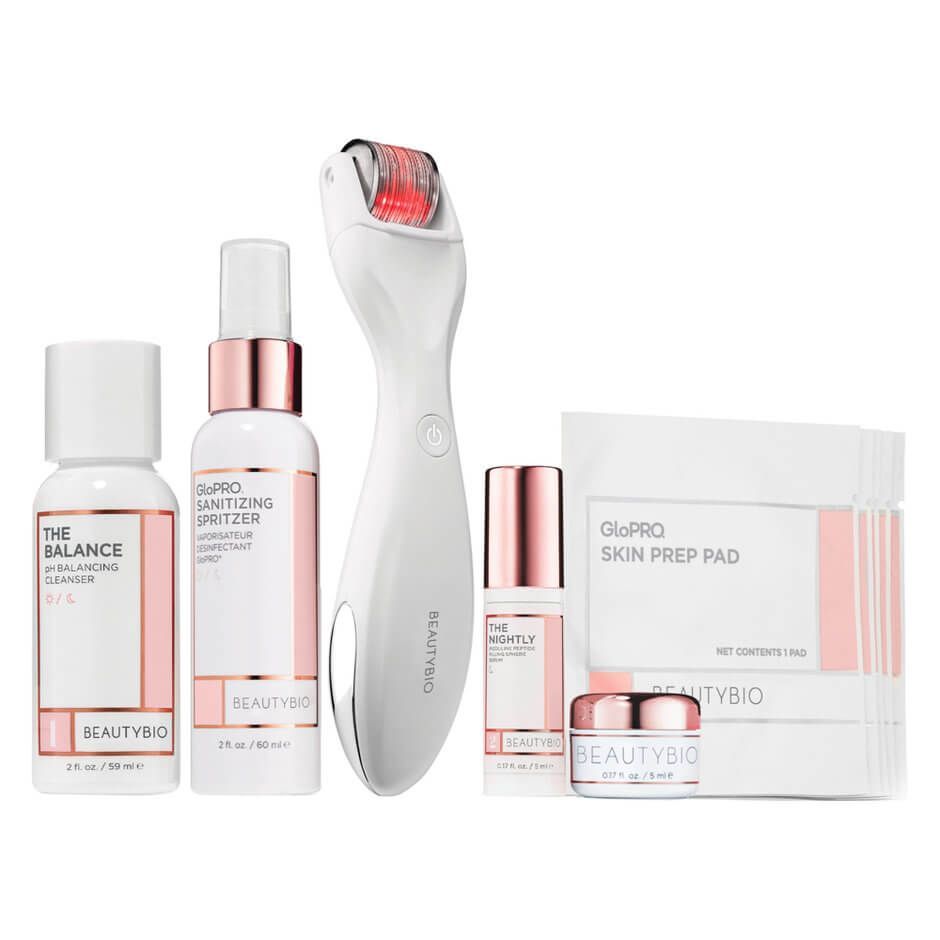Needles only sound fun when the end result is new ink. Even as a grown woman, I admittedly still squirm and squeal at the sight of them at the doctor’s office, yet I’ll never say no to a new tattoo—or the promise of fresh, new skin. Whether you’re new to the world of skin care devices (red light therapy wands, anyone?) or you’re up to date on all the skin treatment fads, microneedling needs no introduction. However, if you need a refresher on the procedure, microneedling is the secret to improving your skin texture and minimizing the appearance of hyperpigmentation and scarring.
“Microneedling is a minimally invasive procedure employing any of a number of devices to prick the skin with tiny needles. The process has many skin benefits, including improving skin tone and texture, stimulating the production of collagen and elastin, and minimizing the appearance of pores,” says NYC-based board-certified dermatologist Dr. Blair Murphy-Rose.
Typically done in-office to maximize results, microneedling can also be done at home using safe, beginner-friendly devices that proffer similar results, sans the lofty price tag or pain. These handheld devices are designed with smaller, less-painful needles that penetrate the skin to allow for better absorption of skin-loving serums—like vitamin C, hyaluronic acid, or other targeted serums that brighten the skin—and increase cell turnover.
If you’re not ready to shell out hundreds of dollars on a single microneedling session, we consulted dermatologists for tips on the best practices for at-home use, and the best devices to start your journey to even, firm, and brighter skin.
Meet the experts:
Dr. Blair Murphy-Rose is a board-certified cosmetic and medical dermatologist at the Laser & Skin Surgery Center of New York and Clinical Instructor of Dermatology at Weill Cornell Medical College
Dr. Bradley Glodny is a board-certified dermatologist and owner of Park Avenue Dermatology.
How does microneedling work?
For the uninitiated, the process can sound quite intimidating. Simply put, microneedling creates tiny incisions in the skin “that triggers a healing cascade providing many skin benefits,” Dr. Murphy-Rose tells ELLE.com. “Tiny needles penetrate the skin [through] a manually controlled, pen-like device that either rolls over the skin on a wheel or moves in and out, raising and lowering the needles while the device is moved across the skin in rows.” However, it’s the depth of the needle that truly determines what results you’ll get. Dr. Glodny adds that the small needles that penetrate the skin vary from “about .25mm to 3mm in depth,” and needles with higher depths result in more downtime. “The penetration of the micro needle causes controlled trauma to the skin, and our skin reacts by creating new skin and collagen,” Dr. Glodny says.
What’s the difference between in-office microneedling and at-home devices?
The major difference between the two is the needles. “The primary difference is the depth of penetration of the needles. In-office devices offer the ability to create greater change in the skin due to deeper needle penetration,” Dr. Murphy-Rose explains. On the other hand, Dr. Glodny notes that “at-home devices provide a much milder treatment and should be used much more consistently for any form of benefit.”
How do you decide on the safest roller to buy? What size should you stay away from?
Dr. Murphy-Rose firmly believes that in-office treatments trump at-home use. “I would really advise avoidance of at-home microneedling devices due to the increased risk of skin infection. It is important to use a disposable sterile needle tip and to perform the procedure under clean conditions,” she shares. Still, she maintains that if you should opt for manual devices for home-use, “the needles should not penetrate deeper than 0.5mm,” she says. “The safest thing, and my recommendation, is to see someone who specializes in microneedling treatments, ideally a board-certified dermatologist, who can minimize the risks and perform the procedure safely. Even superficial microneedling devices can lead to irritation, infection, and scarring,” she warns.
How often should you microneedle your face at home?
Remember: always start off small and conduct a patch test before applying the device all over your face. “If you choose to use an at-home microneedling device, many of these devices can be used weekly to start. Be sure to wait until your skin is healed completely from one treatment before re-treating,” Dr. Murphy-Rose states.
What skin type would benefit from microneedling?
“All skin types can benefit from microneedling. In fact, when performed correctly, it is safe for all skin types and skin colors,” explains Dr. Murphy-Rose. However, Dr. Glodny adds that microneedling is especially beneficial for darker skin tones, “which is not typical of most cosmetic procedures,” he says. “In many settings, microneedling is a very useful treatment for darker skin types.”
Beauty Commerce Editor
Nerisha is the beauty commerce editor at ELLE.com, covering all things beauty (and fashion and music). She has a penchant for sneakers and nude lip glosses, and spends way too much time re-watching 90s sitcoms.



